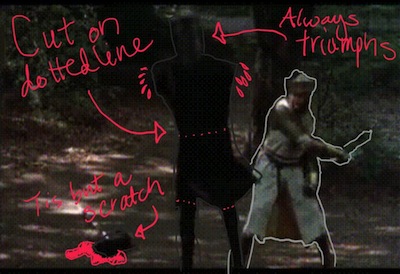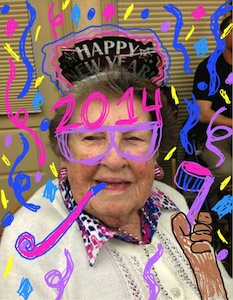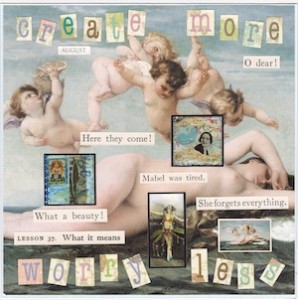 My first experience with testing games was back at my first testing conference when Michael Bolton gave me a testing challenge at lunch: a rubber ball. I didn’t know what I was getting into, but I knew I loved games. And that is a key aspect of how games help us to learn: getting past our resistance by promising us fun. Since software testing is a complex mental activity, exercising our minds is an important part of improving our work.
My first experience with testing games was back at my first testing conference when Michael Bolton gave me a testing challenge at lunch: a rubber ball. I didn’t know what I was getting into, but I knew I loved games. And that is a key aspect of how games help us to learn: getting past our resistance by promising us fun. Since software testing is a complex mental activity, exercising our minds is an important part of improving our work.
After attending several testing conferences, I can safely say one of my favorite aspects of these gatherings is evenings filed with testing games. (That is, games for testers, not testing video games.) Whether you’re rolling the dice (more, spoilers), deducing when a pen is not a pen, building a tower of pyramids, or shouting out “Set!” as you casually wander past, testers love a challenge.
So it was no surprise that John had his game bag already on the table when I arrived for the STC ATL holiday meetup. What I didn’t expect was Disruptus, a new-to-me game. He explained for a few minutes and then we jumped right in to playing. Almost immediately, I flipped over a card with an image of a toilet and the improve card:
Add or change 1 or more elements depicted in the card to improve the object or idea.
TMI
Since we are currently potty training at our house, this was a particularly relevant subject for me. I started rattling off ideas as they came to mind. John stopped me and said that I wasn’t coming up with new ideas but instead listing things that had already been done. While I agreed, I found that saying each of the knowns out loud helped me to clear my head for the next idea to come along.
Ideas that sprang to mind:
- toilet seat lock for babies just learning to walk
- toddler height toilet
- step stool for standing toilet training (boys)
- separate lightweight plastic toddler toilet – could be portable
- folding travel toilet seat for toddler on-the-go
- built-in potty seat for toddler years that is easily removed for cleaning
- moveable toddler handled seat for better balance
- splash guard for boys potty training
- tiny plastic urinal – I’d seen one once at a kids consignment sale
- toilet target for potty training boys
- soft-close lid that doesn’t slam down on little fingers
- tie-in to children’s book/video for better motivating child (i.e. matches picture) – with audio/musical accompaniment for better motivating child
- toilet with book rack attachment – also good for adults!
- tie-in to popular children’s character for better motivating child
- And of course Pinterest is awash in toilet training ideas…
- Dune’s Fremen stillsuit (okay, so that’s not real…)
- water-conserving toilets – high efficiency, multi-flush options
- recycling water from washing hands for next flush
- elevated tank to use gravity for flushing
- recently read an article about posture and advantage of raising feet using step-stool
- bidet attachment that I saw at a co-working space
- soft seat vs. hard seat
- toilet scent spray that a friend mentioned to me & has ridiculous commercial
- elongated seat
- elevated seat for elderly with limited range of motion – vs. seat riser/handles
- foot pedal to raise/lower the lid without using hands
- putting the seat back down in the first place
- self-cleaning – or at least those tablet attachments
- germ resistant surface
- I’d once seen a toilet with an automated toilet-seat-cover replacement system
- I’d seen more exotic toilet options in a local farmer’s market store
- a friend explained the composting toilet to me
- chemical toilet/waterless toilet for big events like outdoor concerts
- urinals – I’d seen a public outdoor urinal in Amsterdam that was just two large crosspieces for minimal privacy
- device allowing women to stand for urination – thanks, Twitter!
- chamberpots
- outhouses
Things I’d never heard of
- Glow-in-the-dark toilet seat – this would be a big hit with the kids!
- Squat toilets
- proximity sensor
- toilet seat warmer – including power saving mode!
- electric lifting seats for the elderly
- female urinal
- sound cloaking
- toilet slippers
- pretty much anything shown in Cars 2 when Mater visits the restroom
Motivation
Of course, it wasn’t until much later (esprit d’escalier) that the thing I really wanted to improve came to mind: I hate toilet auto-flush algorithms. As a happy user of toilet seat covers in public restrooms, I always feel concern about whether I’ll have to contend with a particularly sensitive hands-free toilet. Despite my years of experience, I have not yet mastered the art of evading the motion sensor while placing the toilet seat cover.
I would love to rewrite the algorithm to some set pattern of motions that would distinguish between someone leaning toward the seat to place a liner – and so avoid germs – and someone leaving the stall having completed her errand. Even clap-on, clap-off would be preferable to spray in the face from an unexpected flush.
Protip : My husband takes a 2 foot length of toilet paper and blindfolds the sensor. Manual flush never felt so good.
Training through play
So now that you made it past TMI, let’s get back to the notion of testing games for training testers. Do testing games help testers learn how to test? Many testers are making an argument for this.
John Stevenson is one of them. He uses Disruptus to encourage disruptive thinking that leads to innovation – in testing. Create, Improve, Transform, Disrupt: these 4 approaches are important when designing and executing tests. Finding new ways to remix our tests helps us to focus on things that matter but to approach them in a new way, extending our coverage of various paths and potential usage patterns. My experience with only a few turns of this game left me invigorated and encouraged to try new things at work.
How have you used games to learn about testing?



